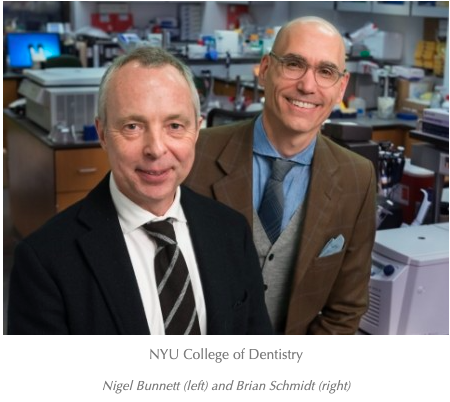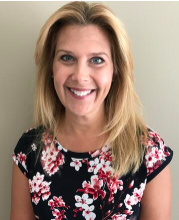LOS ANGELES, Sept. 29, 2020 /PRNewswire/ -- Leaders from across the dental industry today announced the formation of the Dental AI Council (DAIC), an organization devoted to helping define the future of artificial intelligence (AI) in dentistry through research and education. DAIC members represent all major industry constituencies, including practitioners, dental service organizations, equipment manufacturers, practice management software providers, insurance carriers, laboratories and universities. As AI begins to yield increased efficiency, accuracy, consistency and insight in a variety of dental applications, the DAIC will seek to stimulate greater industry-wide understanding of the technology.
The DAIC's primary function is to lead independent research to ascertain where and how AI will prove most valuable to dentistry, empirically validate its functional capabilities and performance, and answer fundamental questions related to AI's role in the oral healthcare ecosystem of tomorrow. In addition to research, the DAIC will facilitate AI-related educational programming, thought leadership content and public advocacy initiatives.
"Diagnosis, treatment, prosthetics, practice management, claims review, FWA oversight––the list of areas where AI can improve performance in our industry is long," said Dr. Linda Vidone, Chief Clinical Officer at Delta Dental of Massachusetts. "To see that performance boost soon, we'll need to buck a trend where innovation in dental lags behind other medical fields. The DAIC will be a reputable information source and guide to encourage AI's early adoption and mindful deployment in dentistry."
The DAIC membership is composed of clinicians, professors and senior executives of leading companies, including Cigna, Delta Dental, DSG, Heartland, Henry Schein, NDX and Walmart.
"The various dental stakeholders usually have distinct appetites when it comes to fruits of technological progress, but AI is a rare example of a technology that can serve all," explained Dr. Markus Blatz, Chair and Professor of Restorative Dentistry, University of Pennsylvania School of Dental Medicine. "The range of representatives joining the table here reflects AI's broad utility and ensures that DAIC research will attend to the whole gamut of industry interests."
Indeed, Dr. Roshan Parikh, Head of Dentistry at Walmart, described the opportunity to engage with leaders across industry constituencies as a key benefit to DAIC membership.
"We need productive interchange of ideas and expertise, cross-pollinated with a best practices-focused mindset to foster advancement in dental AI," Parikh said. "Simply by bringing such a wide range of perspectives to bear on the topic, the DAIC can deliver tremendous value."
Parikh's sentiments echo those of other AI proponents who have cited the importance of inter-professional coordination in dental AI development. The DAIC's first and foremost purpose, however, will be to answer calls for greater industry-wide AI literacy.
"At present, the excitement about AI's enormous value potential in dental is attenuated by misconceptions and even some fear," said the DAIC's lead organizer. Ophir Tanz, CEO of the dental AI company Pearl. "To chart a path forward for AI, the dental community needs to understand the science and recognize common fallacies surrounding AI. It's the DAIC's mandate to provide that education."
The first DAIC study is scheduled to be released later this year. For more information or to sign up for the DAIC newsletter, please visit: www.dentalaicouncil.org.
The Dental AI Council's 15 founding members are:
-
Ashish Tholia, Director of Strategy, Delta Dental
-
Dr. Bruce Lieberthal, Chief Innovation Officer, Henry Schein
-
Dr. Kyle Stanley, Chief Clinical Officer, Pearl
-
Dr. Linda Vidone, Chief Clinical Officer, Delta Dental of Massachusetts
-
Lou Azzara, Chief Executive Officer, Dental Services Group Laboratory
-
Dr. Markus Blatz, Chair and Professor of Restorative Dentistry, University of Pennsylvania School of Dental Medicine
-
Merrit Dake, Chief Executive Officer, Rock Dental
-
Mischa Reis, Senior Vice President, Strategy & Corporate Development, Envista
-
Ophir Tanz, Chief Executive Officer, Pearl
-
Dr. Robert Mongrain, Director of Clinical Advisors, Heartland Dental
-
Ronald Bolden, Vice President of Dental Market Insight, Cigna
-
Dr. Roshan Parikh, Head of Dentistry, Walmart
-
Dr. Sanjay Mallya, Chair & Associate Professor of Oral and Maxillofacial Radiology, UCLA School of Dentistry
-
Steve Bilt, CEO, Smile Brands
-
Tom Daulton, CEO & President, National Dentex Laboratories
About the Dental AI Council
The Dental AI Council (DAIC) is a trade organization devoted to helping define the future of artificial intelligence (AI) in dentistry. It brings together leaders from across the dental category to advance research, education, and thought leadership on AI and its dental applications. Organized by the AI company Pearl, its members represent every dental industry constituency, including practitioners, DSOs, insurance carriers, OEMs, PMS providers, laboratories, and universities. For more information, please visit www.dentalaicouncil.org.



 The National Institute of Dental and Craniofacial Research (NIDCR), part of the National Institutes of Health (NIH), has awarded NYU College of Dentistry researchers Nigel Bunnett, PhD, and Brian Schmidt, DDS, MD, PhD, a $3.9 million grant (R01 DE029951-01) to study targeting endosomal receptors for the treatment of chronic pain.
The National Institute of Dental and Craniofacial Research (NIDCR), part of the National Institutes of Health (NIH), has awarded NYU College of Dentistry researchers Nigel Bunnett, PhD, and Brian Schmidt, DDS, MD, PhD, a $3.9 million grant (R01 DE029951-01) to study targeting endosomal receptors for the treatment of chronic pain.


 Cumming, GA, September 29, 2020 - SafeLink Consulting, Inc., a premier provider of OSHA and FDA regulatory compliance services for dental practices and dental laboratories, announces the newest member of the SafeLink Consulting team, Cathy Ranger. She joins SafeLink Consulting as a Compliance Advisor. For the past 30 years, Cathy has dedicated herself in support of the dental industry. She began her career in the administrative field, serving as both an office and human resources manager for a national dental device manufacturer. Through her responsibilities for facility and employee safety and health, she was inspired to pursue a career in the compliance field. Most recently, she served the dental device manufacturer as Regulatory Compliance Coordinator. Since 2013, she has been working to create, implement and train to relatable policies and programs to decrease risk and improve workplace health conditions that supported the quality efforts of the company. She is passionate about inspiring personal accountability by encouraging active learning, which she believes lends to a culture committed to safety.
Cumming, GA, September 29, 2020 - SafeLink Consulting, Inc., a premier provider of OSHA and FDA regulatory compliance services for dental practices and dental laboratories, announces the newest member of the SafeLink Consulting team, Cathy Ranger. She joins SafeLink Consulting as a Compliance Advisor. For the past 30 years, Cathy has dedicated herself in support of the dental industry. She began her career in the administrative field, serving as both an office and human resources manager for a national dental device manufacturer. Through her responsibilities for facility and employee safety and health, she was inspired to pursue a career in the compliance field. Most recently, she served the dental device manufacturer as Regulatory Compliance Coordinator. Since 2013, she has been working to create, implement and train to relatable policies and programs to decrease risk and improve workplace health conditions that supported the quality efforts of the company. She is passionate about inspiring personal accountability by encouraging active learning, which she believes lends to a culture committed to safety.

